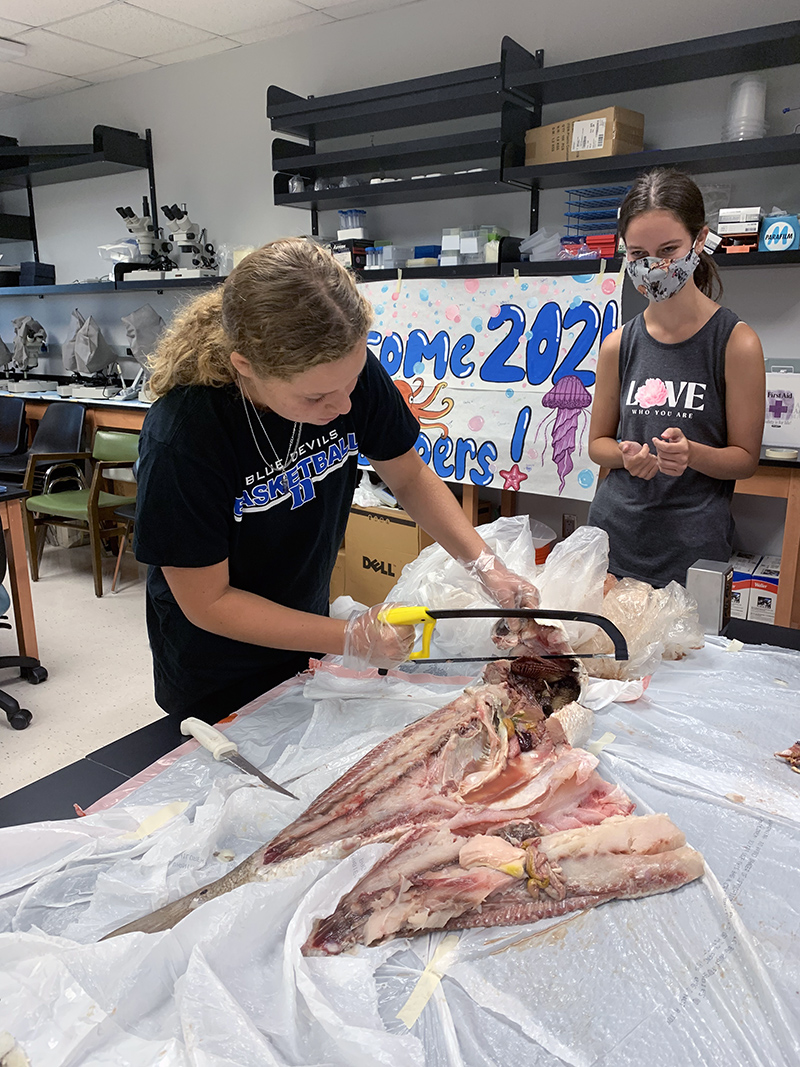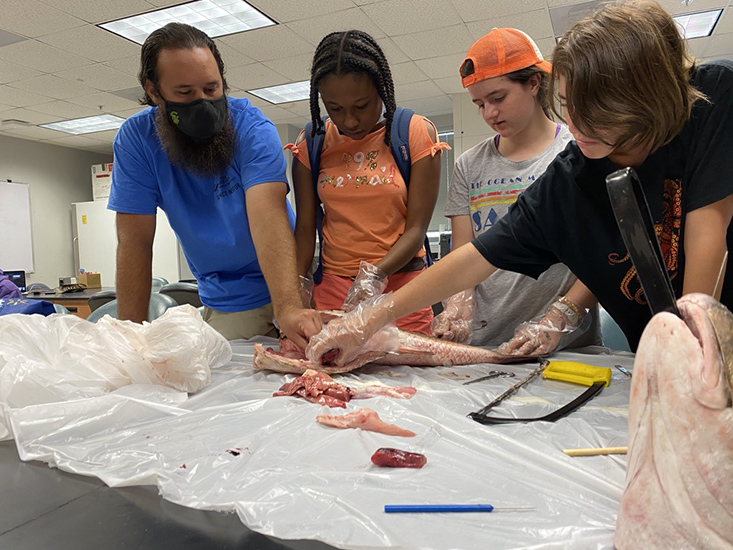Lab rotation: Fish Ecology
Lab leader: Michael Sipes
Peer counselors: Juanita Ruan & Madie Taylor
Written by, Michael Sipes, Science Mentor
This is the fifth year that I’ve had the pleasure of leading the Fish Ecology Lab and every year it’s a blast. As both a lifelong fisherman and a fisheries scientist, this lab has always been very important to me because not only do we learn about fish and why they are important but also how to protect them for future generations to experience and enjoy.
The goal of the lab is pretty straight forward: To learn about fish and why they are important. The first day of the lab started off with trying to answer the intuitively simple question, “What is a fish?”. However, campers quickly learned that trying to describe the most abundant and diverse group of vertebrates on the planet with over 30,000+ species proves to be a bit more challenging than expected.

Camper Madeleine saws into a Redfish as Sara observes so they can look at its internal anatomy.
To help us to answer our question, we quickly dove into analyzing numerous different species local to Tampa Bay and the Gulf of Mexico. Although it’s wise to never judge a book by its cover, you’d be surprised at how much you can learn about fish just by observing their external features. By identifying different body types, fin shapes, and mouth position/tooth shape we can gain insight into how these species interact with each other and their environment. However, to truly understand what makes a fish a fish, the girls had to get their hands slimy. Hair went up, gloves went on, and we plunged right in into our samples, quite literally. Using knives and saws, we cut into our large Redfish to reveal their internal physiology to gain further insight into both how the fish live and their feeding patterns.
On Day 2 campers stepped up their game and became fish biologists themselves. As part of the Fort De Soto field trip, the girls caught, measured, and counted fish using the seine net at both the mangroves and seagrass stations. Taking the data they collected from Fort De Soto this year and combining it with previous years, campers analyzed about a decade’s worth of fish data to calculate both species richness and biodiversity for these locations. On the last day of camp, we used those calculations to see how/if the fish populations have changed over the years and why it’s important to monitor these potential changes to ensure that fish populations remain healthy.
